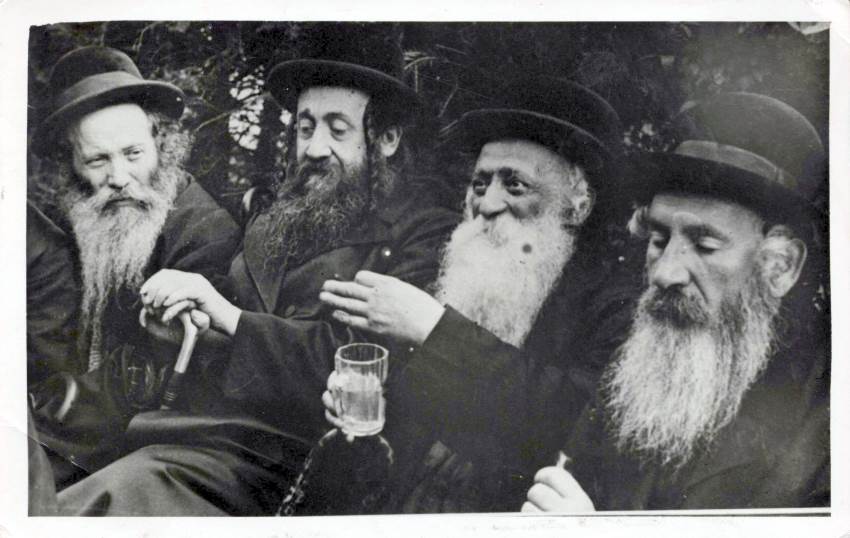History
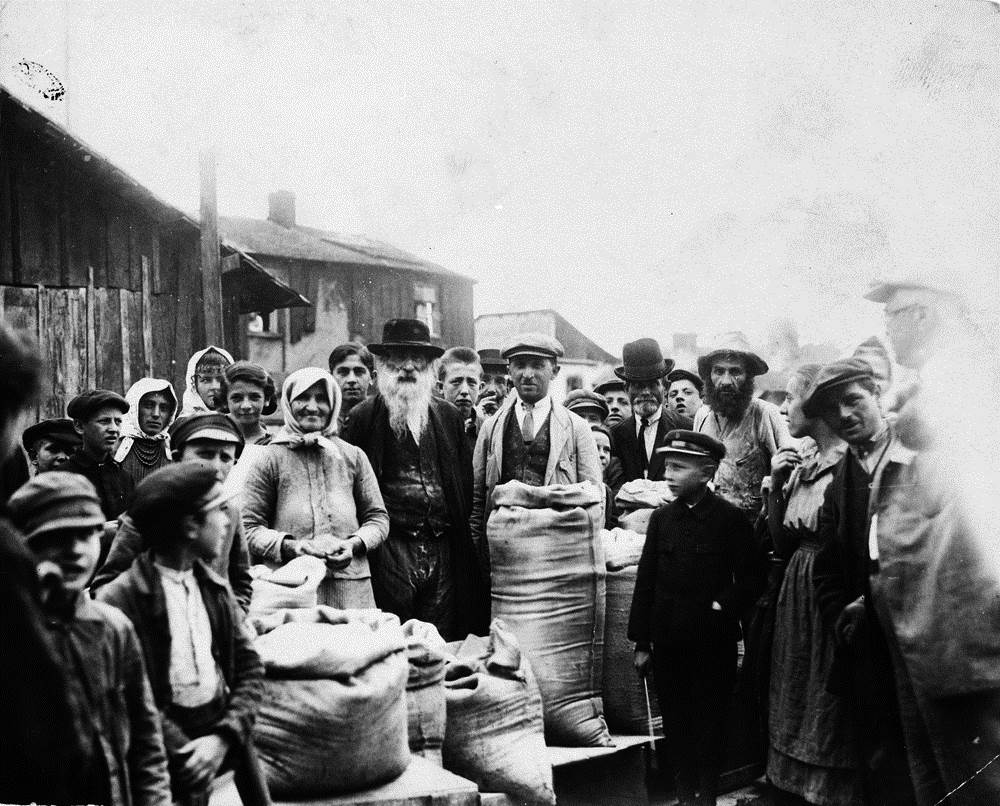
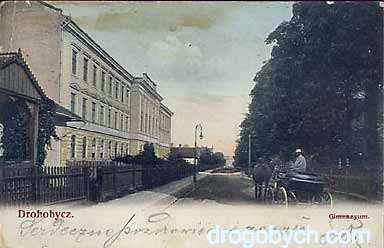
The Jews of Drohobycz, Boryslaw and the surrounding villages experienced many booms and busts throughout history that ultimately ended tragically in the Holocaust. The Jewish population of the region was largely responsible for developing the rich natural resources of salt and petroleum of the area and converting them into thriving industries. This region was also home to many noted business leaders and intellectuals. Using their initiative and talent, they transformed these small Galician towns into a significant center of industry and culture.
BEGINNINGS
The first Jews to settle in Galicia arrived in the tenth century, most likely from Byzantium and Khazaria. In the thirteenth century, after the Tatars invaded Poland, these early Jewish settlers were joined by Jews from Germany who had been invited to settle in Poland by Polish kings eager to increase prosperity in their cities. King Boleslaw the Pious issued the famous Statute of Kalisz, a charter that placed Jews under royal protection. The Jewish sect, the Karaites, also came to Poland in the same century. After the region was annexed to the Polish Kingdom in 1349, the Jewish population, and particularly its German constituents, expanded considerably. Ultimately, the customs and practices of the German Jews and their language, Yiddish, prevailed as the dominant culture of the entire community. Over the following centuries, the Jewish population of the region increased remarkably. Jews migrated from their early centers of settlement to live in many villages, small towns and estates throughout Galicia, an eastern province of the Polish kingdom.
THE SALT INDUSTRY OF DROHOBYCZ
The earliest records of Jews in Drohobycz date back as early as the fifteenth century. The existence of ancient salt mines in the area may have attracted Jews to Drohobycz. These salt mines became very profitable for the authorities and employed many of the area's population, including Jews. The natural salt found in this area occurs as a watery solution. It appears that the Jews were instrumental in developing methods to haul this natural solution from its source to processing centers for drying, cleaning and packing it, then transporting it to the markets. Thus, they effectively transformed primitive salt mining into a modern industry.
King Kazimir II Jagiełło entrusted the salt mines of Drohobycz to a Jew named Woleczko (a.k.a. Natko): because "[thanks to] his industry and wisdom [and] his ability... we can increase the income to our treasury". Woleczko was also the king's broker and owned several villages in the area. Another Jew in Drohobycz, Detko or Dzatco, obtained salts mine leases in return for payment of silver and silk. He had trade connections in Turkey and Kiev and supplied the royal court. Then again a Jew named Samson expanded the salt trade all the way to Western Europe. In the early part of the sixteenth century, the Drohobycz municipal government received the right to tax beverages and salt. This established the legal basis for later leasing the collection of these taxes and for licensing trade in these industries to Jews. In 1564 Yaakov Yuditz, a salt mine lessee, received the right to lease the brandy tax in Drohobycz.
By 1578 the total population of Drohobycz, Gentile and Jewish, amounted to 3,600 persons. In that year the King Stefan Batory granted the city the "privilegium de non tolerandis Judaeis" by which Jews were essentially banished from Drohobycz, forbidden to live in or near the city except during fairs.
THE 17TH CENTURY – BANISHMENT AND RETURN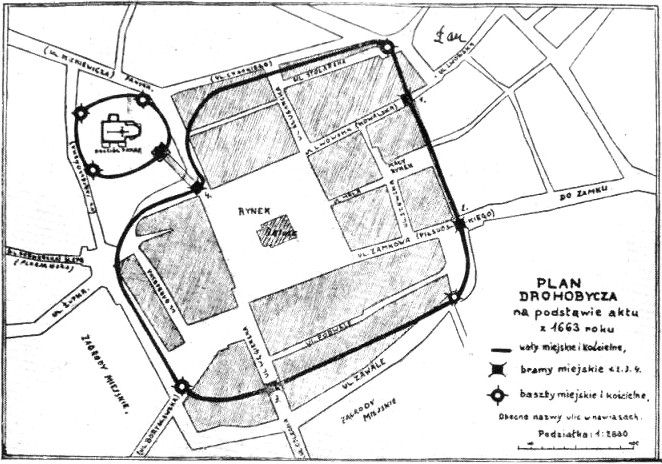 With their banishment from the city, the period of relative prosperity and calm for the Jews came to an end. During this time, the Jews took to the roads again, leaving Drohobycz and building their homes in the small towns and villages in the surrounding area. This was probably the origin of the towns of Boryslaw, Schodnica and Urycz. When the Cossacks arrived, the Jews fled once again and traveled as far as Stryj.
With their banishment from the city, the period of relative prosperity and calm for the Jews came to an end. During this time, the Jews took to the roads again, leaving Drohobycz and building their homes in the small towns and villages in the surrounding area. This was probably the origin of the towns of Boryslaw, Schodnica and Urycz. When the Cossacks arrived, the Jews fled once again and traveled as far as Stryj.
Only in the seventeenth century were Jews permitted to settle more or less permanently in Drohobycz. At that time, the continued Jewish presence in the city, however, was contingent on contract, which was renewed annually in exchange for 300 pieces of gold. At first they built homes in the Na Lanie quarter outside of town, explaining the origin of its principal street's name, Ulica Żydowska (Jewish Street). Most Jews earned their living by manufacturing and trading in beer and brandy. Towards the end of the century, under the rule of King Jan III Sobieski, the Jewish population was re-established and prospered, engaging in trade and crafts and building homes and businesses in the town.
THE 18TH CENTURY – GOOD FORTUNE, THEN A BLOOD LIBEL
The eighteenth century was a period of prosperity for the Jews of Drohobycz.
They dominated virtually all commerce, industry and trade,
including the export of salt, for which the market extended all the way to Germany.
The Jews also started to trade in livestock and textiles and developed banking and foreign currency exchange operations. Jewish salt merchants of Drohobycz and Lwów competed strongly with one another.
During this period a Jewish community with all its institutions was established in Drohobycz. Kabala scholars, supporters and opponents of the Shabtai Zvi messianic movement as well as hassidic rabbis and their opponents became part of the growing community. The first synagogue was built in the beginning of the 1700s.
In 1718 the body of a murdered Gentile child was discovered. An affluent Jewish woman, Adela Kikenis, was accused of murder and using human blood for Passover matzah. Although her gentile maid eventually admitted to the murder as part of a conspiracy, Mrs. Adela (who had been secretly offered conversion as a condition for freedom, but refused) was
executed. The effect of these difficult events left its mark on the community for many years after.
In the 1750s what became known as the notorious Zalman Affair took place.
Zalman Ben Ze'ev (Wolfmanowicz), an arrogant, unpopular and dishonest, though central Drohobycz personality, tyrannized both the Jewish and gentile communities. He ruthlessly caused much suffering and precipitated anger and unrest. King August intervened and ordered that Zalman be brought to trial. At the same time, the Jewish community sought to initiate a legal suit against him under the jurisdiction of the Jewish Lwów District Council. However, due to Zalman's power, this was not successful. The Jewish leaders of Drohobycz and surrounding communities met in Stryj and agreed to join forces with the gentiles against Zalman. The royal commissars investigated the allegations, arrested and ultimately convicted Zalman and his family. Zalman's property was confiscated and he was sentenced to hang. A last minute offer of a huge ransom at the gallows dramatically commuted his death sentence to life imprisonment. As a condition of his release from jail, Zalman converted to Christianity and retired to a monastery where he died two years later. His story became a legend in a Ruthenian (East Ukranian) folksong. The Jewish community's debts were multiplied as a result of the Zalman Affair.
In 1711 the synagogue built in Drohobycz burned down and was replaced by a grand new one that became renowned as the largest synagogue in Galicia. The city continued to grow. By the end of the eighteenth century, eighty-six villages or shtetls were affiliated with the Drohobycz community. The census of 1765 shows 1,923 Jews living in Drohobycz and environs, including sixteen tailors, four furriers, three dyers, one tinsmith, one bookbinder, two jewelers and... many musicians. In Drohobycz itself, 979 Jews paid the Jewish head tax and owned 200 houses.
THE 19TH CENTURY – THE AUSTRO-HUNGARIAN PERIOD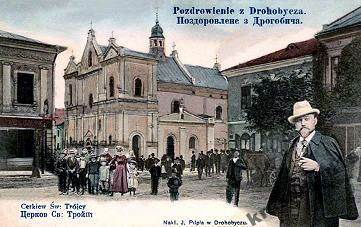 The occupation of Galicia by the Austro-Hungarian Empire and the discovery of petroleum in Boryslaw at the beginning of the nineteenth century were highly significant for the Jewish population. They shaped the lives and history of Jews in Galicia and especially those of Drohobycz and Boryslaw.
The occupation of Galicia by the Austro-Hungarian Empire and the discovery of petroleum in Boryslaw at the beginning of the nineteenth century were highly significant for the Jewish population. They shaped the lives and history of Jews in Galicia and especially those of Drohobycz and Boryslaw.
In 1772, Austria annexed parts of Poland under the administrative name of Galicia (Galizien). The empire imposed many new rules and regulations. In the 1780s, Emperor Joseph II initiated a series of reforms designed to abolish the legal distinctions made between the Jewish and gentile communities, uniting all under a single civil code and administration. Social welfare, civil record-keeping, and tax collection were administered by districts directly accountable to the central Austrian regime. The central government tried to enact various reforms that were considered enlightened by the standards of the time. For example, they tried to encourage Jews to assimilate so they would no longer be different from other citizens. Taxation and army service applied to all residents equally without discriminating on the basis of ethnicity, nationality or religion. Rabbinical civil law and the political and legal rights of the kehilla were abolished. Jews were no longer considered a "national community" but rather a "religious group". All Jews were required to take fixed and hereditary surnames and were no longer permitted to conduct bookkeeping for their businesses in Yiddish.
Unfortunately, Joseph II's reform was soon undone by his successors and the status of Galician Jews fluctuated for the next 125 years, depending on the internal politics of the Habsburg Empire. However, in spite of economic oppression, severe poverty, heavy taxation and government interference in communal affairs, the period of Austrian rule (1772-1918) was a high point of Jewish life in Galicia.
PETROLEUM DISCOVERED IN BORYSLAW Until the mid nineteenth century Boryslaw, which is located only 6 miles (9 kilometers) from Drohobycz, was a small sleepy town on the road from the outlying villages to Drohobycz and its markets. The Jews of Boryslaw made their living by providing services to passing merchants and by working in the salt mines. In the 1780s the Austrian government took over the salt industry, thus hurting Jewish businesses and livelihood. If it were not for the discovery of ozokerite (paraffin, mineral wax) and petroleum in Boryslaw during this time, these two towns might have suffered the same fate as other shtetls and villages in Galicia: poverty, bitter disputes between Hassidim and Mitnagdim (traditionalists who stressed the intellectual aspects of religion), and fly-by-night businesses. These discoveries, however, changed the face of these towns and with it, their history.
Until the mid nineteenth century Boryslaw, which is located only 6 miles (9 kilometers) from Drohobycz, was a small sleepy town on the road from the outlying villages to Drohobycz and its markets. The Jews of Boryslaw made their living by providing services to passing merchants and by working in the salt mines. In the 1780s the Austrian government took over the salt industry, thus hurting Jewish businesses and livelihood. If it were not for the discovery of ozokerite (paraffin, mineral wax) and petroleum in Boryslaw during this time, these two towns might have suffered the same fate as other shtetls and villages in Galicia: poverty, bitter disputes between Hassidim and Mitnagdim (traditionalists who stressed the intellectual aspects of religion), and fly-by-night businesses. These discoveries, however, changed the face of these towns and with it, their history.
Boryslaw become the center of an "oil rush", which spread to Drohobycz, Schodnica, Kropiwnik, Tustanowice and the entire area. The news of "black gold" traveled quickly and the area rapidly became flooded with inventors, entrepreneurs, wealthy investors, laborers and adventurers – all trying to get rich fast. Jews were definitely among those who developed methods for cleaning and improving the efficiency of the crude oil and the added value of its end products. Most of the crude oil from Boryslaw was transferred to refineries in Drohobycz. Many of the refineries in Drohobycz were under Jewish ownership until the end of the nineteenth century. Approximately 80% of the management and the employees in the research and development centers built around the Jewish-owned refineries were Jews.
The population in Boryslaw tripled. The discovery of crude oil, its refinement and the commercial use of petroleum products changed the economic fortunes of many Jews in Drohobycz, Boryslaw and the surrounding areas. Boryslaw was filled with drilling towers; the fires above them created the sense of a lighted metropolis at night. Wooden sidewalks were constructed and Boryslaw became more urban in character. Refinery management and administration, including banking and legal services, were located in Drohobycz. The philanthropic generosity of the Jewish oil magnates and the owners of flourishing ancillary industries, such as the wood industry, allowed the Jewish community to establish several social service institutions, including an orphanage, an old folks' home, a hospital, and a fine private gymnasium or secondary school. Some of the most luxurious homes still in existence today were built for and by Jews during that period.
THE TURN OF THE 20TH CENTURY, WORLD WAR ONE AND ITS AFTERMATH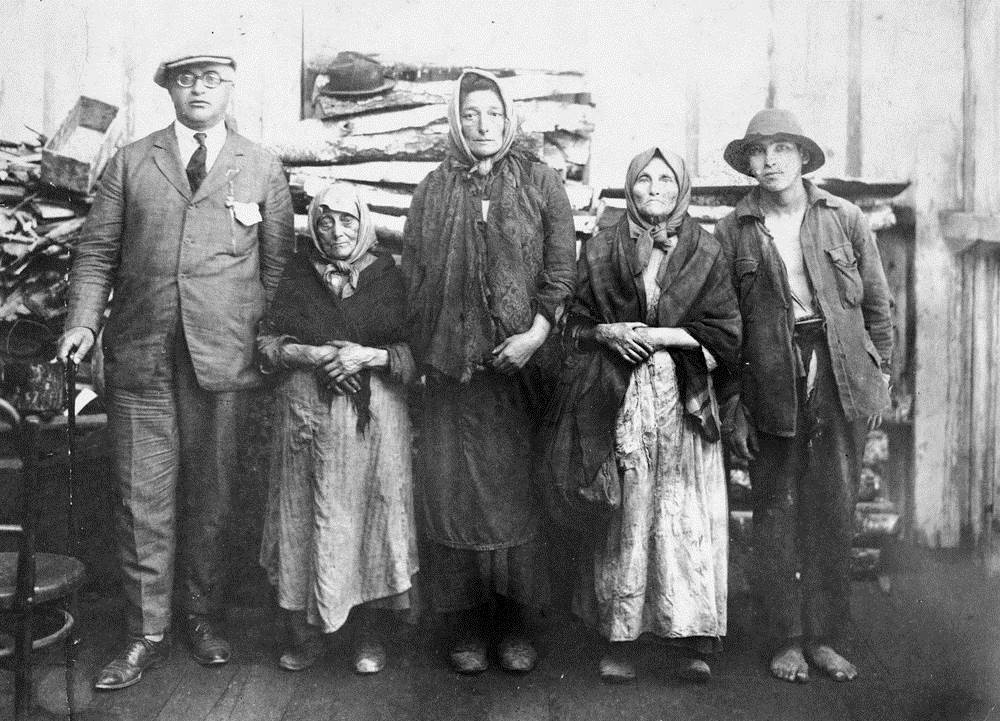 The First World War created a severe crisis for the Jews in Drohobycz, Boryslaw and the neighboring areas. Drohobycz was occupied by the Russians on September 16th, 1914, and soon after followed by serious and extremely cruel attacks on Jews by the Cossacks. Many Jewish homes were destroyed and many families were forced to leave the area. The Russian authorities abolished the institutions of the Jewish kehilla. This made it very difficult to address the growing demand for welfare which had resulted from the destruction of Jewish trade and commerce.
The First World War created a severe crisis for the Jews in Drohobycz, Boryslaw and the neighboring areas. Drohobycz was occupied by the Russians on September 16th, 1914, and soon after followed by serious and extremely cruel attacks on Jews by the Cossacks. Many Jewish homes were destroyed and many families were forced to leave the area. The Russian authorities abolished the institutions of the Jewish kehilla. This made it very difficult to address the growing demand for welfare which had resulted from the destruction of Jewish trade and commerce.
A short reprieve came in June of 1915 when the Austrians re-conquered Drohobycz and the Russians retreated to the Dniester River. Life returned to normal for a short while and the Jewish rescue committee of Lwow set up a branch in Drohobycz.
On February 11th, 1918, with the final demise of the Austro-Hungarian Empire, Drohobycz was definitively assigned to the newly established Western Ukrainian Republic. The authorities denied Jewish rights and destroyed Jewish trade and commerce. The oil fields were nationalized and Jews suffered severely from lack of employment resulting in further poverty. By the end of the war, approximately 40% of Jewish families required welfare aid and the Jewish council organized soup kitchens to feed the needy. The Jews also suffered from frequent harassment by local Ukrainian villagers. Thus, those who could - emigrated, never to return. Some went to Palestine, many others to America. By 1920, the Jewish population of eastern Galicia had declined by 125,000 persons, some 20% relative to 1910. However, the comparative importance of the Jewish population in Drohobycz and Boryslaw remained significant. Census figures show that in both Drohobycz (11,833) and Boryslaw (7,170), the Jewish population constituted approximately 44% of the cities' total residents.
BETWEEN THE WARS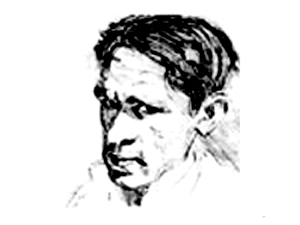 In June 1919 the Poles re-conquered Drohobycz.
In June 1919 the Poles re-conquered Drohobycz.
The newly-independent Polish regime officially discriminated against Jews by prohibiting their employment in the civil service, limiting their numbers in the professions, and using quotas to restrict admission to university. Despite these developments, the 1920s and 1930s saw growth of the Jewish population in Drohobycz and Boryslaw and an enhancement of the expressions and diversity of Jewish life. Strong interest in Zionism activated establishing of branches of most Zionist movements in both towns. Zionist activist, Leon Tannenbaum of Boryslaw, served as the Drohobycz deputy mayor for many years. Jewish cultural life flourished – theatre, synagogues both traditional and progressive as well as a yeshiva, beit midrash and religious educational institutions for children. Drohobycz cosmopolitan environment, aided by the multi-national oil companies and foreign banks which established branches in town, created a fertile ground for artists, leaders and thinkers like the painter, Maurycy Gottlieb, and his brother Leopold, the painter Ephraim Lillien, the teacher, author and artist, Bruno Schultz, and leaders such as Leon Reich and David Horowitz, to name a few.
THE END
The German army invaded the region in June 1939. After a short time, in accordance with the Ribbentrop-Molotov pact just concluded between Stalin and Hitler, the Germans retreated, to be replaced by the Russians. In 1941 the pact collapsed and the Germans invaded once again. This historic event brought to an end 500 years of Jewish life in Drohobycz, Boryslaw and the entire area. The Holocaust destroyed a vibrant legacy and a rich, albeit turbulent, history of Jewish life and community.
Throughout these years this area had been a refuge, a place to call home in hard times and in good times, to grow and to build flourishing communities. At the end, it became a death trap.
We, the survivors of Drohobycz, Boryslaw and the area, our children, grandchildren and future generations can still hear the wagons' rumbling, the travelers' prayers, the children's voices, the sounds of the market, the writers, the painters, the thinkers and the doers. We contemplate our parents, grandparents and all the generations who established the heritage that made us who we are today, and we remember those who did not survive. We dedicate these pages to them and to their memory.
BIBLIOGRAPHY
Sefer Zikaron le-Drohobycz, Boryslaw ve-Ha-seviva
Drohobycz-Boryslaw and the surrounding area Yizkor Book (in English)
Important dates and milestones for Jews in Drohobycz:
A Brief History of Drohobycz
History of Jews in Drohobycz:
Drohobycz - Encyclopedia of Jewish Communities in Poland, Volume II
Memorial to the Jews of Drohobycz, Boryslaw and Surroundings
History of Drohobycz Community - Polish Heritage Center (in Hebrew)
History of Jews in Boryslaw:
Boryslaw
Encyclopedia of Jewish Communities in Poland, Volume II
More about the Jews of Boryslaw
Religious and cultural life in Boryslaw:
History of the Jews of Bryslaw
The History of Jewish Galicia:
Galizia (Galicia) History
Galicia: The Lost Land
A Brief History of Galicia
Historical Maps:
Maps
For more reading:
D. Horowitz, My Yesterdays, Schocken Books
L. HERT[HELD], A TYSMIENICA NADAL PLYNIE
The Polish Origin
Parts translated into Hebrew
Parts translated into English
David Einsiedler, I Remember Drohobycz, The Galiziener

